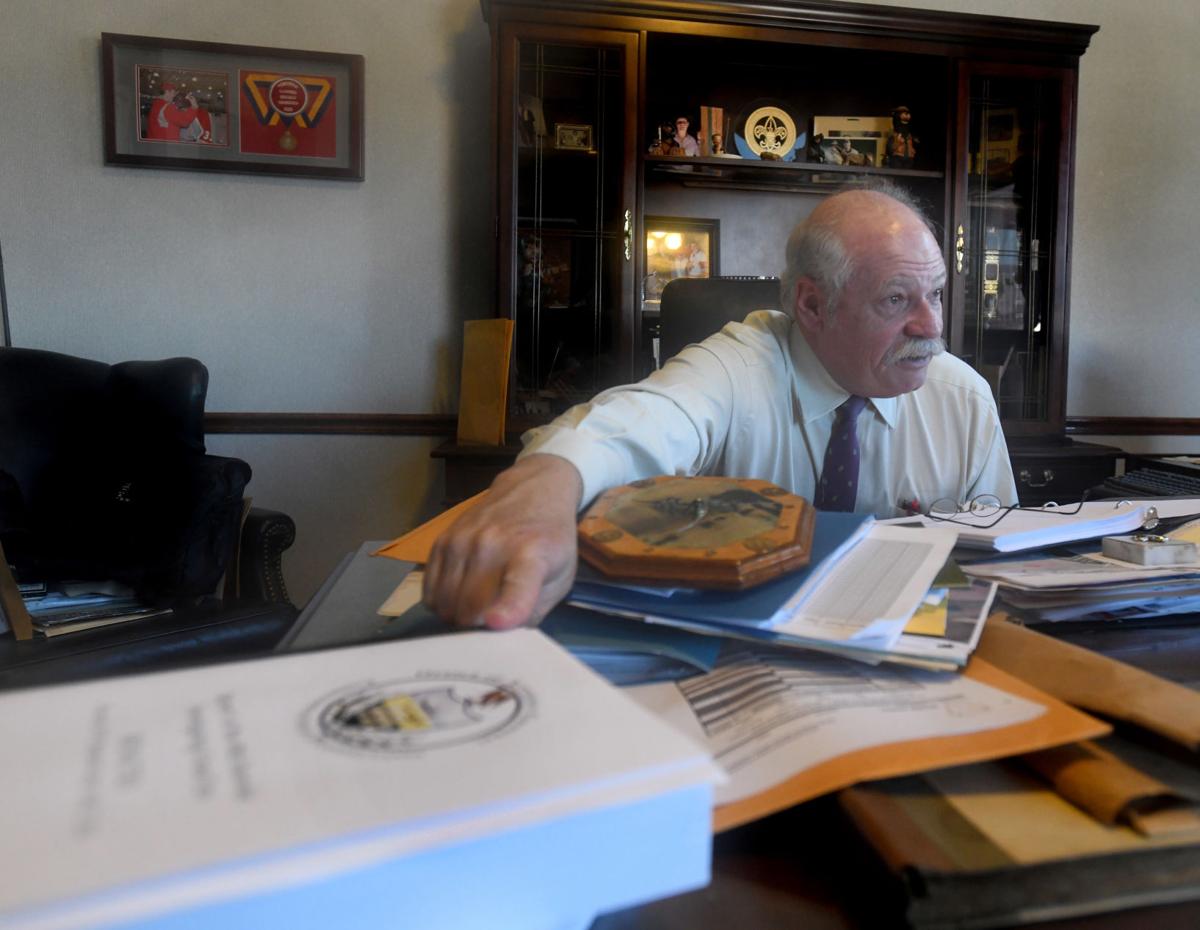Judge Who Guided Pennsylvania Grand Jury Investigations into Abuse by Priests Knew Impact ‘would Be Huge’
By Jocelyn Brumbaugh
As testimony began in the statewide probe, Krumenacker said he realized that the 40th investigative grand jury’s report “would be huge nationally.” The Tribune-Democrat asked the AG's office to comment on Krumenacker's role in the process, but a spokesman there said Shapiro and his staff could not openly discuss a grand jury investigation. Jurors 'were angry' The 40th statewide investigative grand jury served the maximum 24 months allowed by statute, weighing “half a million pages of internal diocesan documents,” according to their introduction to the six-diocese report, released Aug. 14. Those documents, the grand jurors wrote, contained credible allegations against more than 300 priests and identified more than 1,000 child victims. Krumenacker said jurors met for 25 sessions – twice during the last month to finish the 884-page report. From November 2017 to April 2018, he said, more than half of their sessions were spent on the statewide diocese investigation and the last two weeks were dedicated specifically to finalizing the report, page by page. “What’s important is the essence of the report,” he said. “It’s designed to bring scope and depth of the conspiracy to the public eye.” The grand jury was "a full cross-section of our western Pennsylvanian communities,” including several devout Catholics, Krumenacker said. “The grand jury is a mix of the public,” he said. Krumenacker credited understanding employers who recognized the importance of employees’ service on a grand jury, and said the jurors themselves understood what was a stake. “I can assure the public these citizens take it seriously,” he said. “They challenge the attorney general, the witnesses. They do not rubber-stamp anything.” Krumenacker said he’s seen grand juries “become families” through their service – growing together, experiencing significant life events during their service and supporting one another as they listen to testimony that can be often be difficult to hear. “They grow into the job,” he said, and the state does offer counseling services for those negatively impacted by hearing troubling details.
The judge said the grand jury's 20 members chose to meet one last time in early August, after their dismissal, to compose a letter addressing the pushback their report received even before it was released to the public. “They were angry” after hearing so much evidence, and wanted to speak out in fear the report might never reach the public, Krumenacker said. “That really shows the commitment and dedication of these people,” he said. Appeals and redactions The report on the six diocese raised objections from several named priests and other religious leaders who argued they were not given due process regarding their rights to protecting their reputations. The arguments within the Pennsylvania Supreme Court that followed revived a discussion about updating the state's 1978 Grand Jury Act. Krumenacker said that prior to his assignment, he spoke with other grand jury supervising judges and Thomas G. Saylor, chief justice of the Pennsylvania Supreme Court, about inconsistencies in the statute. One issue was grand jury secrecy – in place to protect the integrity of an investigation and the reputations of the innocent, Krumenacker said. However, the Grand Jury Act allows witnesses to discuss their testimony in public unless they are gagged for specific reasons. Grand jurors, however, are sworn to keep absolute secrecy about the matters they’re hearing and considering. Ultimately, the Pennsylvania Supreme Court ruled in July that a redacted version of the report should be released, pending the outcome of appeals filed by individuals named in the report. The redacted version of the report – made public in August – protected the names of, and any identifying information about, those individuals. “I do not disagree with the court’s opinion,” Krumenacker said. “I have great respect for a person’s reputation. (The appeals) will spawn some significant changes in the Grand Jury Act and procedural rules.” Moving forward, as the Pennsylvania Supreme Court and legislators weigh changes in matters including the the Grand Jury Act and statute of limitations, Krumenacker said society should be able to participate in correcting wrongdoing – but respect due process, in place to give defendants rights. “I think the legislature has a lot of important decisions to make,” he said. Krumenacker said he believes it would be difficult to create retroactive changes in the statute of limitations for child sexual abuse.
|
.
Any original material on these pages is copyright © BishopAccountability.org 2004. Reproduce freely with attribution.

